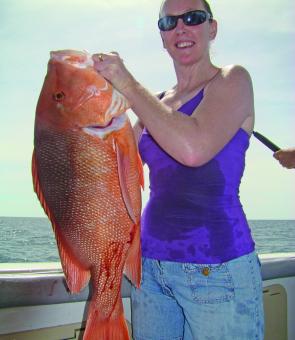April is traditionally a month where the crossroads of the two seasons, wet and dry, converge. It is a fantastic month where our summer species remain on the bite and our winter species shift up a gear.
It is a productive time thanks to months of rain liberating new leases of life in the form of fishfood. Both inshore and offshore scenes can be explosive, if the winds and rains abate to some degree.
Inshore our river systems are already teeming with medium to large sized queenfish and trevally and they will enjoy feeding on the abundance of bait. Live bait, casting poppers and lures on incoming tides at the entrances should see plenty of action, provided there is not too much freshwater in the system.
Grunter will be actively feeding across the flats and fresh strips of mullet or sardine will be welcomed. A live bait across the flats will produce your bigger species.
There have been some handsome sized barra being caught of late and the bigger variety have been taken around rocky headlands on lures and at the entrances of small run off creeks along the beaches and in the rivers using live mullet. One would anticipate these areas to continue firing especially on the a dropping tide.
To see more barra action concentrate your efforts with lures in the estuaries and rivers around snags that are around pressure points of banks or mangrove islands. Keep the lure in the strike zone for as long as possible for best results. Fishing these snags will also see the ever aggressive mangrove jack keen to latch onto your presentation.
Keep a close eye on the beach scene, in particular for jelly prawn hatches that will hug in small bays and gutters. These rice-like creatures are a calling sign for trevally, queenfish, tarpon, barra, blue salmon, whiting and giant herring. Casting tiny metal slices or small white fly profiles will guarantee a piece of the action. Early morning efforts in the low light will see the fish become quite aggressive often turning sections of water into a boiling froth.
You will not have to travel too far offshore for pelagic action this month if the weather can be kind. There will be plenty of bait around surrounding islands and headlands with mackerel species, queenfish, trevally and tuna taking advantage. A number of tactics can be employed, including trolling feather jigs, casting metal slices and poppers or even floating out a live bait such as a sardine. And a keen eye is needed to spot bust ups or birds working in the distance.
Always watch your sounder and look for bait schools near the top of the surface and work over these areas, the predators will not be too far away.
On the outer reef it is time to start planning a few trips. Gradual dips of the water temperature will see the fish become more consistent. Even though there have been some brilliant catches over the warmer months, they have been more quality than quantity.
This month should see the largemouth nannygai and red emperor continue to bite well and they will be joined in force by the smallmouth nannygai, which have been patchy over the warmer months. There will be days where the smallmouth will explode in numbers. Finding isolated bommies in around 25-35m of water may have these fish in tight schools extending right up the water column. It only takes one to bite to begin a chain reaction.
The coral trout will appreciate the fall in water temperature as well and will become staple catches. Trevally species will be on the move in packs and Spanish mackerel will start to appear in better numbers and often they are not too far away from your red schools. If the winds offer a string of calm weather definitely take advantage of it and hit the blue highway.
April is an exciting month on all fronts and all we need is ripe conditions to bear the fruit.
Reads: 2921
The warmer months have seen some great largemouth nannygai and red emperor catches. The smallmouth nannygai are expected to kick back into full swing to compliment their bigger cousins.




